Strategic Challenges of Human Resources Allocation in Industry 4.0
Abstract
:1. Introduction
- Customer expectations;
- Product improvement;
- Innovation in cooperation;
- Organizational forms.
2. Theoretical Background
2.1. Sectors of the National Economy
- The agricultural sector (A), which includes domestic agriculture, fisheries and forestry;
- The industrial sector (I), which includes the mining and processing industries, the production and distribution of electricity, gas and water, in addition to construction;
- The services sector (S), which includes trade, finance and insurance, transport, storage and communications, education, health, veterinary and social work, and other services.
2.1.1. Primary Sector
2.1.2. Secondary Sector
2.1.3. Tertiary Sector
2.1.4. Quaternary Sector
2.1.5. The Fifth Sector
2.2. Labor Market in the Czech Republic
Structure of Employment in Industry Sectors and According to the Classification of Occupations in the Czech Republic
2.3. Digital Transformation
3. Methodology and Objectives
- Population—this reservoir visualizes the total population in the Czech Republic set in default values.
- Economically active people—They represent a part of the population or the number of people who are able to work in a group from 15 to 64 years.
- Robotics—Introduction of a given number of automation machines into the industry.
4. Results
5. Discussion and Conclusions
Author Contributions
Funding
Institutional Review Board Statement
Informed Consent Statement
Data Availability Statement
Acknowledgments
Conflicts of Interest
References
- Ziaei Nafchi, M.; Mohelská, H. Effects of Industry 4.0 on the Labor Markets of Iran and Japan. Economies 2018, 6, 39. [Google Scholar] [CrossRef] [Green Version]
- Kopp, J.; Basl, J. Study of the Readiness of Czech Companies to the Industry 4.0. J. Syst. Integr. 2017, 8, 1804–2724. [Google Scholar] [CrossRef]
- Maskuriy, R.; Selamat, A.; Maresova, P.; Krejcar, O.; David, O.O. Industry 4.0 for the construction industry: Review of management perspective. Economies 2019, 7, 68. [Google Scholar] [CrossRef] [Green Version]
- Schwab, K. The Fourth Industrial Revolution; Crown Business: New York, NY, USA, 2017. [Google Scholar]
- Benhamou, S. The World of Work in 2030: Four Scenarios. In NEUFEIND, Max, Jacqueline O’REILLY a Florian RANFT, Work in the Digital Age: Challenges of the Fourth Industrial Revolution; Rowman & Littlefield International: London, UK, 2018; pp. 259–270. ISBN 978-1-78660-907-6. Available online: https://policynetwork.org/wp-content/uploads/2018/06/Work-in-the-Digital-Age.pdf (accessed on 6 July 2018).
- Weltwirtschaftsforum, A.T.; Kearney Incorporated. Readiness for the Future of Production Report 2018. Available online: https://www.weforum.org/reports/readiness-for-the-future-of-production-report-2018 (accessed on 17 August 2020).
- BSG. Industry 4.0: The Future of Productivity and Growth in Manufacturing Industries. 2015. Available online: https://www.bcg.com/publications/2015/engineered_products_project_business_industry_4_future_productivity_growth_manufacturing_industries.aspx (accessed on 17 April 2020).
- Czech Statistical Office. High-Tech Sector. 2019. Available online: https://www.czso.cz/csu/czso/high_tech_sektor?fbclid=IwAR04i98Wa6Zli8mGUOPFqLa9v4YrGjgi7bxsuA15hu9uG4u3nppRQ8L_BI (accessed on 5 April 2020).
- OECD. High, Medium and Low Technology Exports. Available online: https://stats.oecd.org/oecdstat_metadata/ShowMetadata.ashx?Dataset=CSP6&Coords=%5BSUB%5D.%5BHTEXPORT%5D&Lang=en (accessed on 7 March 2021).
- Mohelská, H.; Sokolová, M.; Cierniak-Emerych, A.; Dziuba, S.T. Employment in high-technology industries in the european union and job satisfaction—Case study Czech Republic and Poland. Econ. Res.-Ekon. Istraživanja 2020, 33, 639–651. [Google Scholar] [CrossRef]
- Synek, M.; Kislingerová, E. Podniková ekonomika; C.H. Beck: Munich, Germany, 2017. [Google Scholar]
- Bahrin, M.A.K.; Othman, M.F.; Azli, N.H.N.; Talib, M.F. Industry 4.0: A review on industrial automation and robotic. J. Teknologi 2016, 78, 137–143. [Google Scholar] [CrossRef] [Green Version]
- Stejskal, J.; Kuvíková, H.; Mikušová Meričková, B.; Linhartová, V. Teorie a Praxe Veřejných Služeb; Wolters Kluwer: Alphen aan den Rijn, The Netherlands, 2017. [Google Scholar]
- Kraftová, I. Finanční Analýza Municipální Firmy; C.H. Beck: Munich, Germany, 2002. [Google Scholar]
- Mpsv, Č.R. Analýza Vývoje Zaměstnanosti a Nezaměstnanosti v Roce 2018. Ministerstvo Práce a Sociálních Věcí ČR, 2019/84292-414/1. 2019. Available online: https://www.mpsv.cz/documents/20142/848077/anal2018.pdf/760053b9-9f64-b616-5453-2447ee935b7e (accessed on 11 January 2020).
- Czech Statistical Office. Employment, Unemployment. 2020. Available online: https://www.czso.cz/csu/czso/zamestnanost_nezamestnanost_prace (accessed on 17 April 2020).
- Gajšek, B.; Vujica Herzog, N. Smart Glasses in Sustainable Manual Order Picking Systems. In Sustainable Logistics and Production in Industry 4.0. EcoProduction (Environmental Issues in Logistics and Manufacturing); Grzybowska, K., Awasthi, A., Sawhney, R., Eds.; Springer: Cham, Switzerland, 2020. [Google Scholar] [CrossRef]
- Boneva, M. Challenges related to the digital transformation of business companies. In Proceedings of the 6th International Conference Innovation Management, Entrepreneurship and Sustainability (IMES 2018), Prague, Czech Republic, 31 May–1 June 2018; pp. 101–114. [Google Scholar]
- Verhoef, P.C.; Broekhuizen, T.; Bart, Y.; Bhattacharya, A.; Qi Dong, J.; Fabian, N.; Haenlein, M. Digital transformation: A multidisciplinary reflection and research agenda. J. Bus. Res. 2021, 122, 889–901. [Google Scholar] [CrossRef]
- Kumar, A.; Nayyar, A. si3-Industry: A Sustainable, Intelligent, Innovative, Internet-of-Things Industry. In A Roadmap to Industry 4.0: Smart Production, Sharp Business and Sustainable Development; Springer: Berlin/Heidelberg, Germany, 2020. [Google Scholar] [CrossRef]
- Hausberg, J.P.; Liere-Netheler, K.; Packmohr, S.; Pakura, S.; Vogelsang, K. Research streams on digital transformation from a holistic business perspective: A systematic literature review and citation network analysis. J. Bus Econ. 2019, 89, 931–963. [Google Scholar] [CrossRef] [Green Version]
- Kumar, A.; Gupta, D. Challenges Within the Industry 4.0 Setup. In A Roadmap to Industry 4.0: Smart Production, Sharp Business and Sustainable Development; Springer: Cham, Switzerland, 2020. [Google Scholar] [CrossRef]
- Grabowska, S.; Gajdzik, B.; Saniuk, S. The Role and Impact of Industry 4.0 on Business Models. In Sustainable Logistics and Production in Industry 4.0. EcoProduction (Environmental Issues in Logistics and Manufacturing); Grzybowska, K., Awasthi, A., Sawhney, R., Eds.; Springer: Cham, Switzerland, 2020. [Google Scholar] [CrossRef]
- Eurostat. Available online: https://ec.europa.eu/eurostat (accessed on 11 January 2018).
- The Ministry of Industry and Trade of the Czech Republic. Panorama of the Manufacturing Industry of the Czech Republic. 2018. Available online: https://www.mpo.cz/assets/en/industry/manufacturing-industry/panorama-of-the-manufacturing-industry/2019/10/panorama_aj_web.pdf (accessed on 6 July 2020).
- The Ministry of Industry and Trade of the Czech Republic. Panorama zpracovatelského průmyslu ČR 2018 (1. vyd., Roč. 22); The Ministry of Industry and Trade of the Czech Republic: Praha, Czech Republic, 2018. [Google Scholar]
- Czech Statistical Office. Digital Economy in Figures. 2020. Available online: https://www.czso.cz/documents/10180/122362640/06300620_c.pdf/bcd3a63b-1507-4a55-a218-b58680df4adb?version=1.1 (accessed on 11 January 2020).
- Czech Statistical Office. Employment. 2019. Available online: https://www.czso.cz/csu/czso/13-1132-06-za_rok_2005-3_2__zamestnanost (accessed on 5 April 2020).
- Maskuriy, R.; Selamat, A.; Ali, K.N.; Maresova, P.; Krejcar, O. Industry 4.0 for the Construction Industry—How Ready Is the Industry? Appl. Sci. 2019, 9, 2819. [Google Scholar] [CrossRef] [Green Version]
- Bučková, V. Industry 4.0: A Human Resource Management Perspective. Bachelor’s Thesis, Faculty of Informatics and Management, University of Hradec Králové, Hradec Králové, Czech Republic, 2019. [Google Scholar]
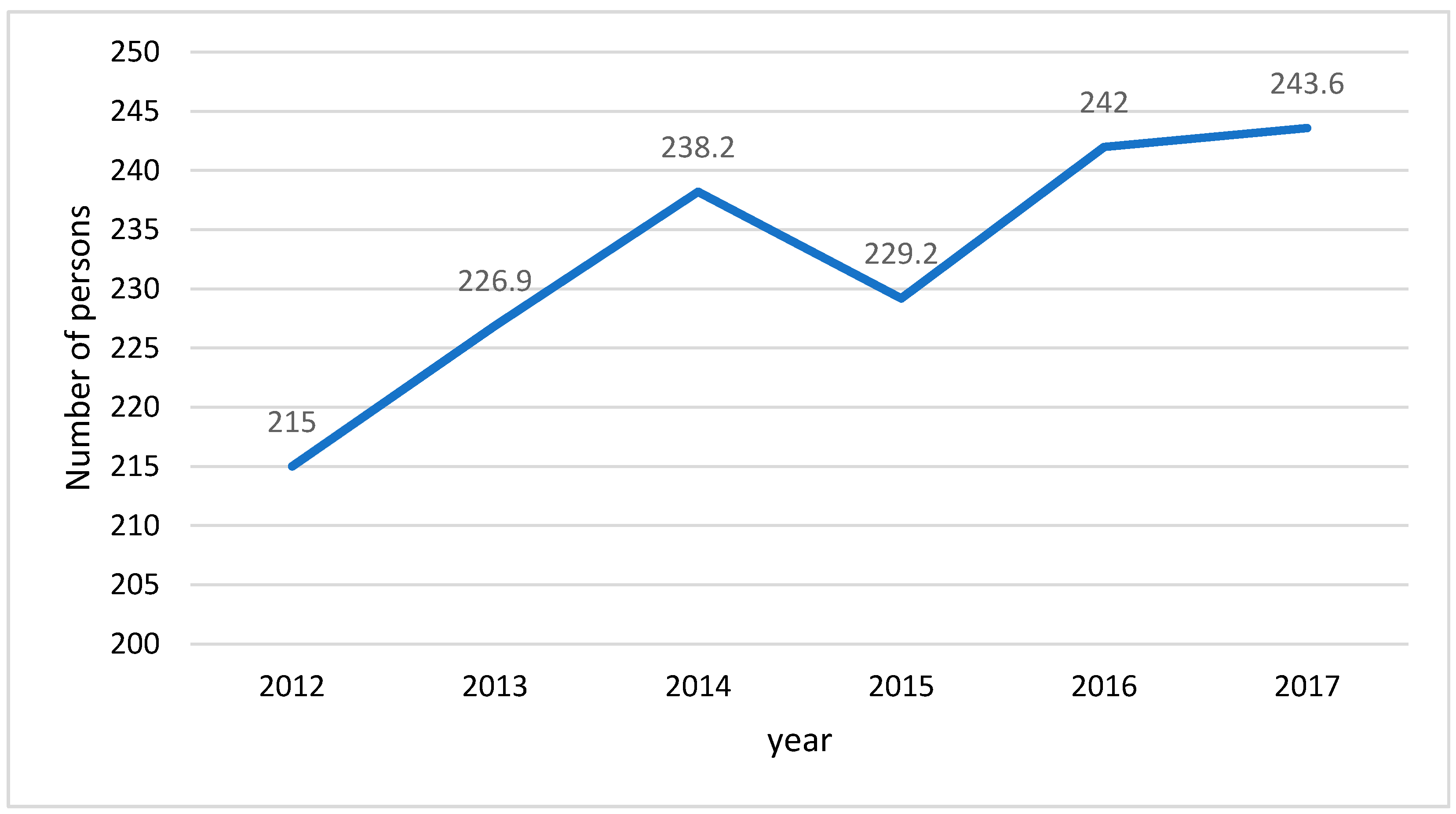
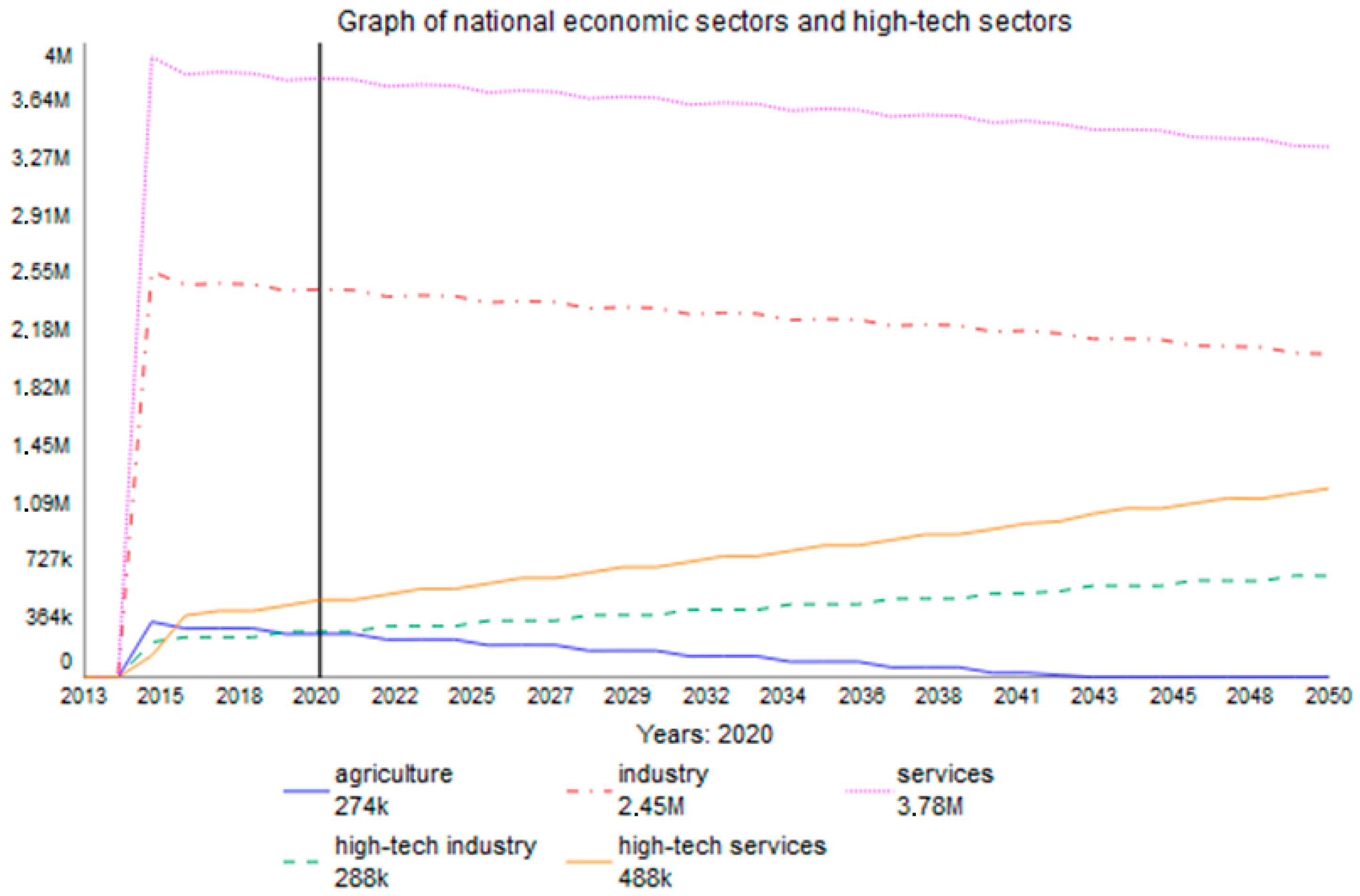
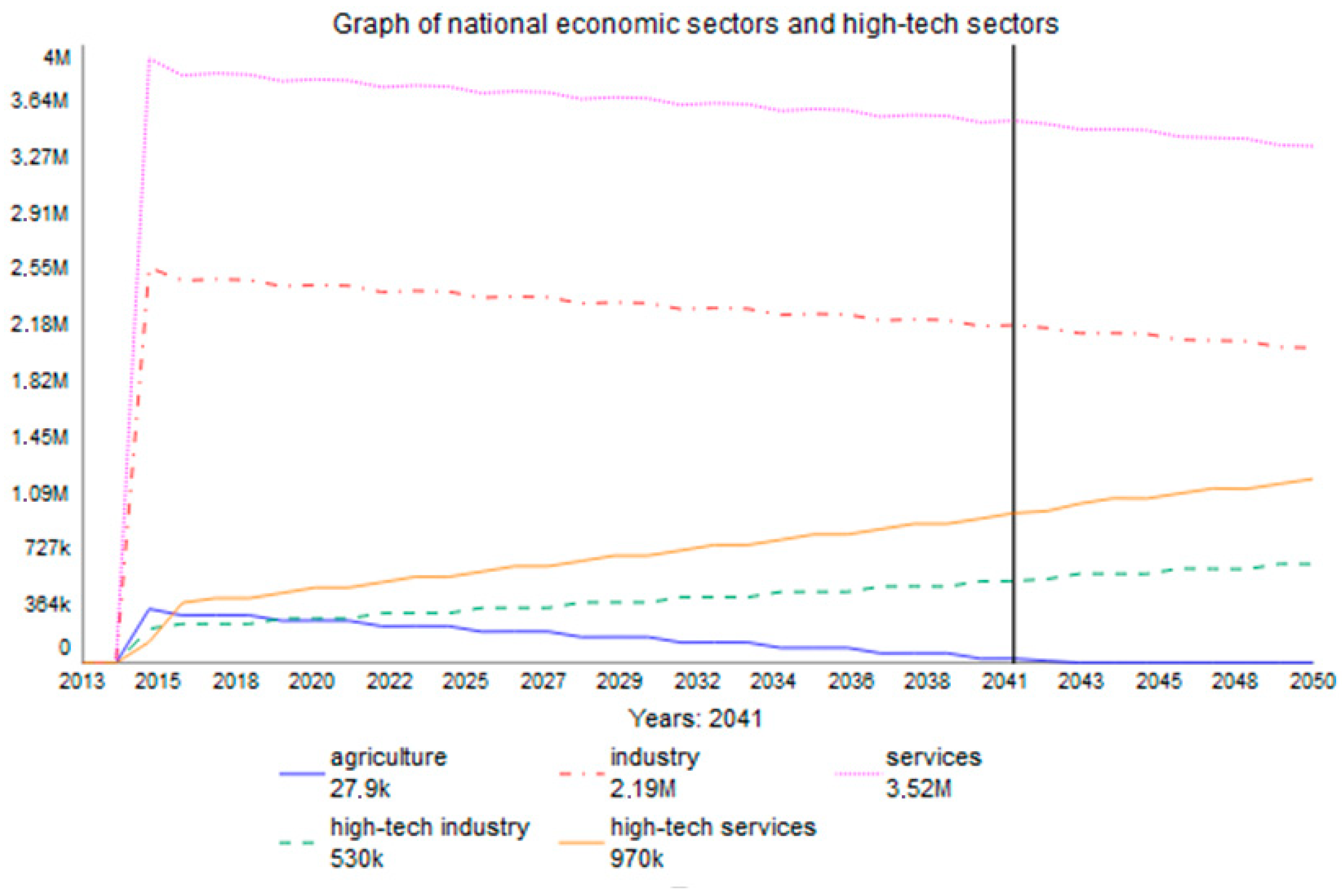
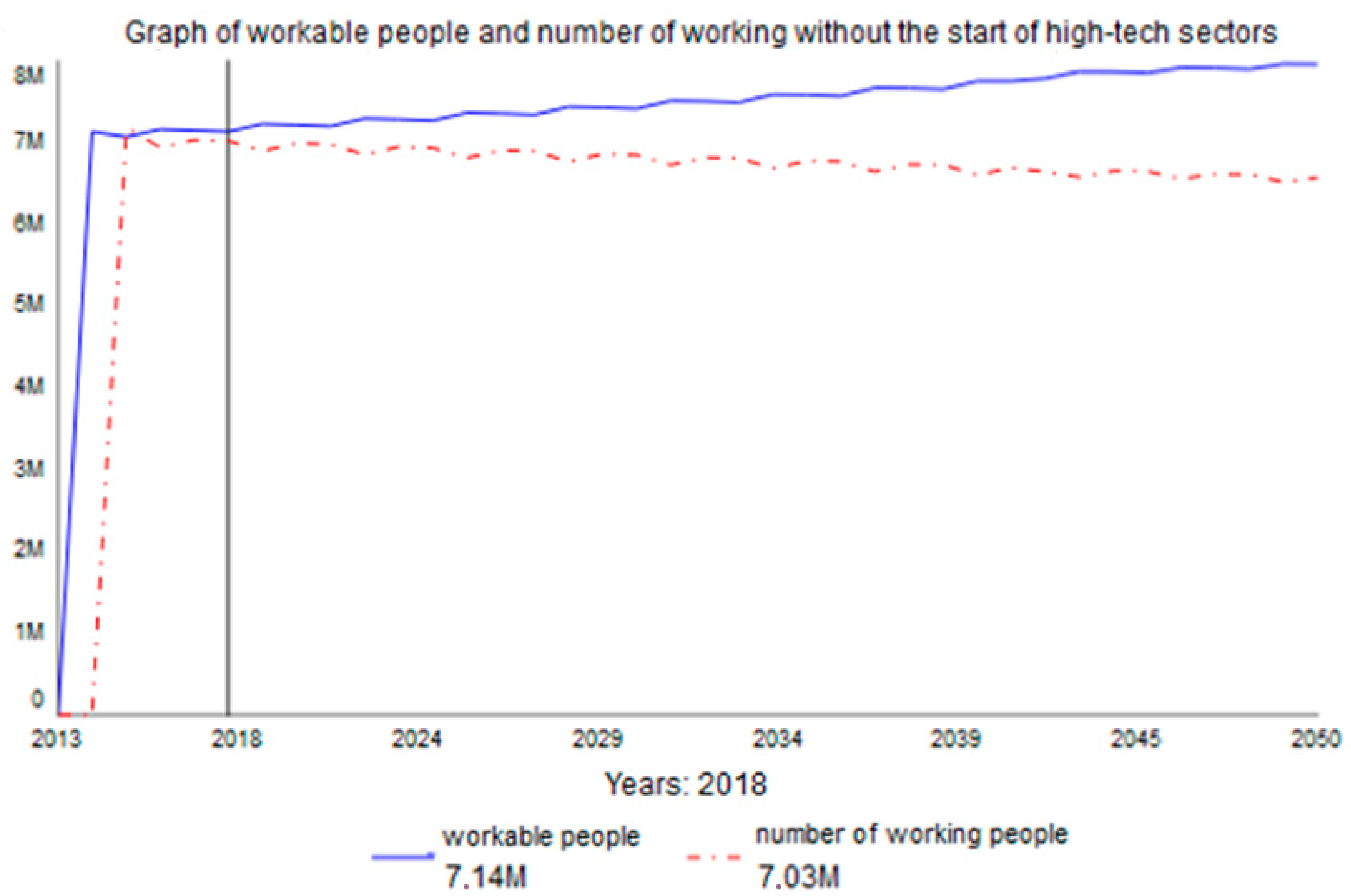
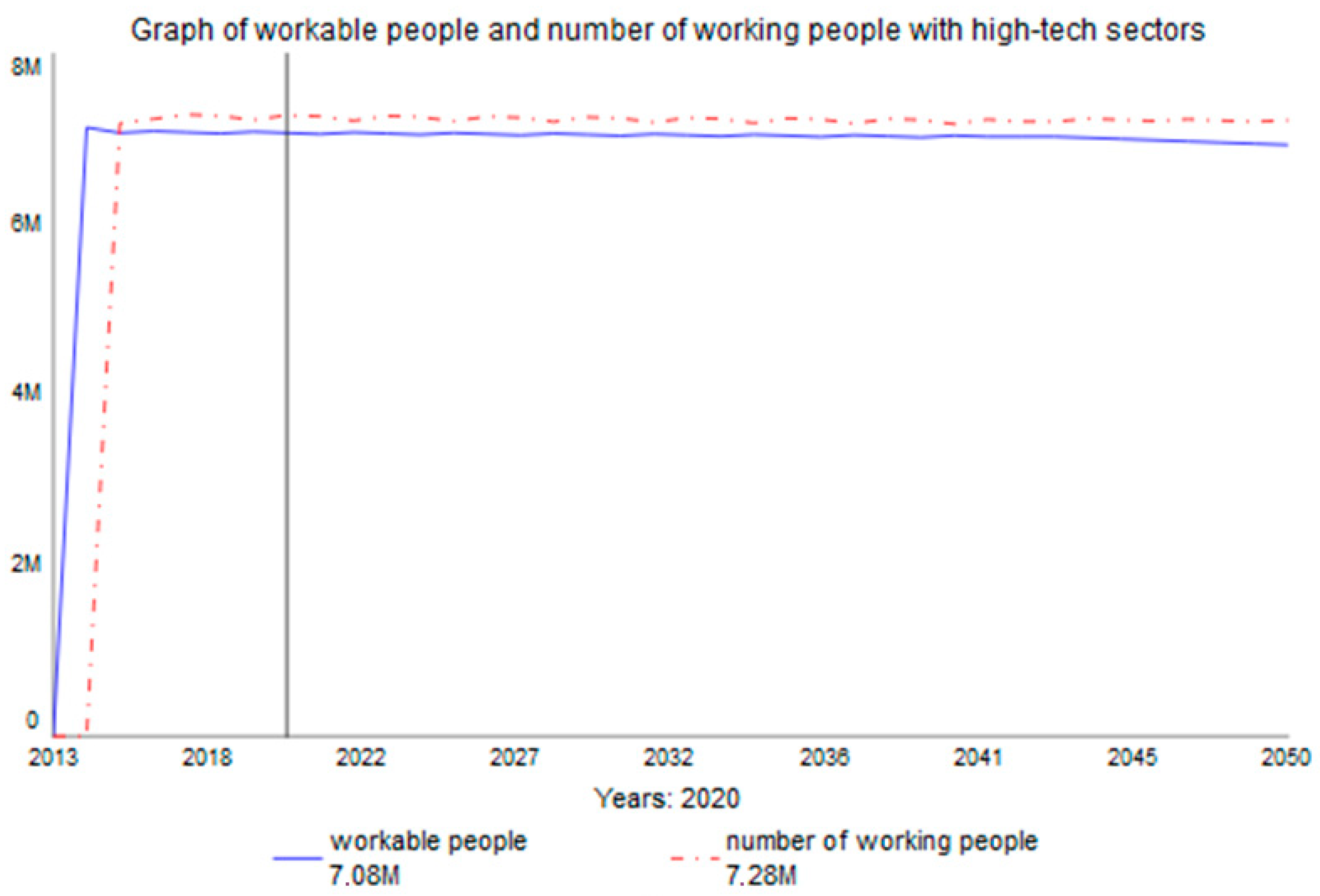

| Employment in the National Economy | 2017 | 2018 | Difference 2018–2017 (In Thousands) | Index 2018/2017 (%) | ||
|---|---|---|---|---|---|---|
| In Thousands | % | In Thousands | % | |||
| Total | 5221.6 | 100. 0 | 5293.8 | 100.0 | 72.2 | 100.0 |
| Primary sector (I) | 146.3 | 2.8 | 148.3 | 2.8 | 2.0 | 101.4 |
| Secondary sector (II) | 1986.9 | 38.1 | 1984.9 | 37.5 | −1.9 | 99.9 |
| Of that in construction | 391.9 | 7.5 | 384.0 | 7.3 | −7.9 | 98.0 |
| Tertiary sector (III) | 3087.5 | 59.1 | 3160.3 | 59.7 | 72.8 | 102.4 |
Publisher’s Note: MDPI stays neutral with regard to jurisdictional claims in published maps and institutional affiliations. |
© 2021 by the authors. Licensee MDPI, Basel, Switzerland. This article is an open access article distributed under the terms and conditions of the Creative Commons Attribution (CC BY) license (http://creativecommons.org/licenses/by/4.0/).
Share and Cite
Ziaei Nafchi, M.; Mohelská, H. Strategic Challenges of Human Resources Allocation in Industry 4.0. Information 2021, 12, 120. https://doi.org/10.3390/info12030120
Ziaei Nafchi M, Mohelská H. Strategic Challenges of Human Resources Allocation in Industry 4.0. Information. 2021; 12(3):120. https://doi.org/10.3390/info12030120
Chicago/Turabian StyleZiaei Nafchi, Majid, and Hana Mohelská. 2021. "Strategic Challenges of Human Resources Allocation in Industry 4.0" Information 12, no. 3: 120. https://doi.org/10.3390/info12030120
APA StyleZiaei Nafchi, M., & Mohelská, H. (2021). Strategic Challenges of Human Resources Allocation in Industry 4.0. Information, 12(3), 120. https://doi.org/10.3390/info12030120






